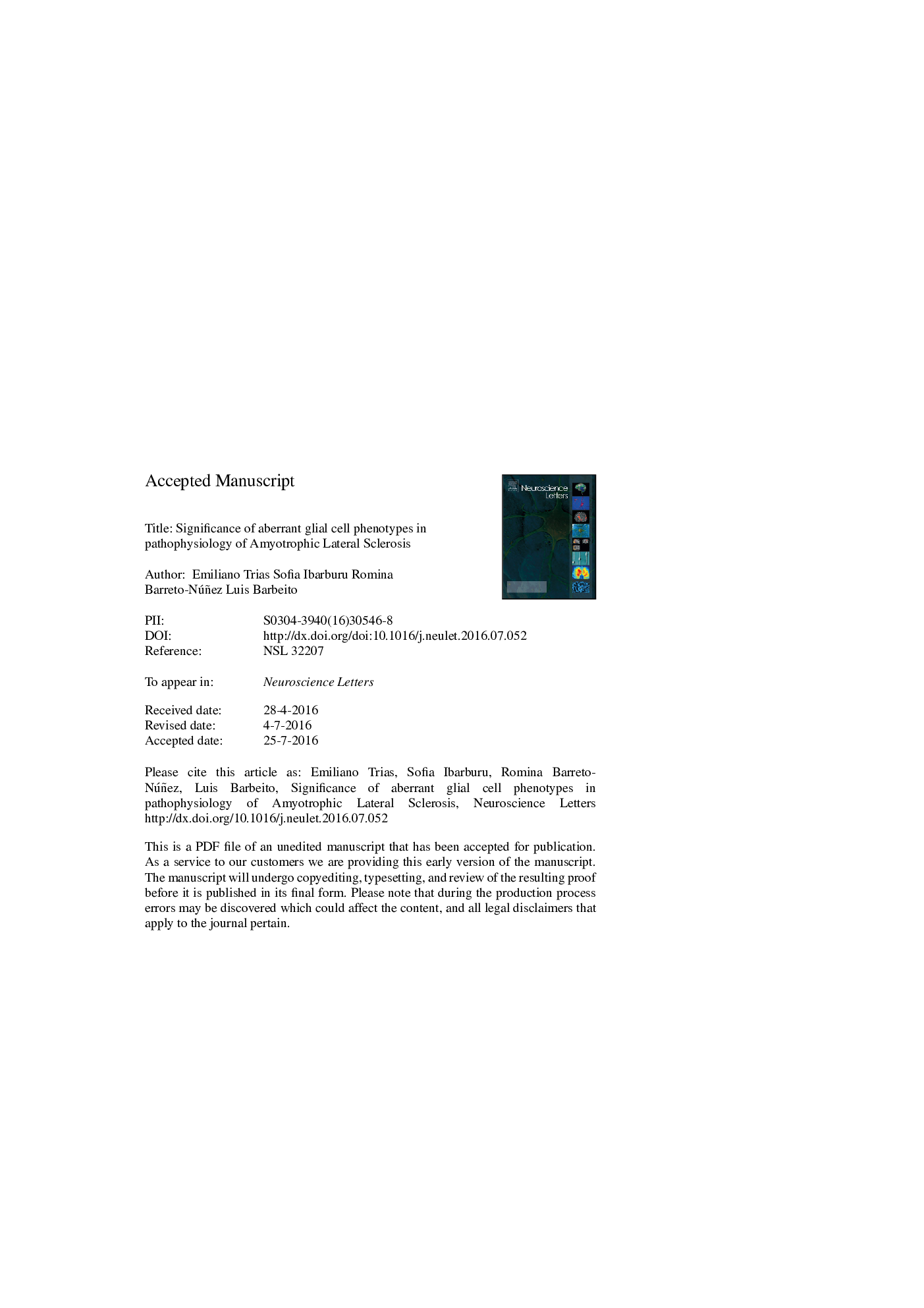| کد مقاله | کد نشریه | سال انتشار | مقاله انگلیسی | نسخه تمام متن |
|---|---|---|---|---|
| 5738714 | 1615063 | 2017 | 16 صفحه PDF | دانلود رایگان |
عنوان انگلیسی مقاله ISI
Significance of aberrant glial cell phenotypes in pathophysiology of amyotrophic lateral sclerosis
ترجمه فارسی عنوان
اهمیت فنوتیپهای سلولهای غیرطبیعی گلایی در پاتوفیزیولوژی اسکلروز جانبی آمیوتروپیک
دانلود مقاله + سفارش ترجمه
دانلود مقاله ISI انگلیسی
رایگان برای ایرانیان
موضوعات مرتبط
علوم زیستی و بیوفناوری
علم عصب شناسی
علوم اعصاب (عمومی)
چکیده انگلیسی
Amyotrophic Lateral Sclerosis (ALS) is a paradigmatic neurodegenerative disease, characterized by progressive paralysis of skeletal muscles associated with motor neuron degeneration. It is well-established that glial cells play a key role in ALS pathogenesis. In transgenic rodent models for familial ALS reactive astrocytes, microglia and oligodendrocyte precursors accumulate in the degenerating spinal cord and appear to contribute to primary motor neuron death through a non-cell autonomous pathogenic mechanism. Furthermore in rats expressing the ALS-linked SOD1G93A mutation, rapid spread of paralysis coincides with emergence of neurotoxic and proliferating aberrant glia cells with an astrocyte-like phenotype (AbA cells) that are found surrounding damaged motor neurons. AbAs simultaneously express astrocytic markers GFAP, S100β and Connexin-43 along with microglial markers Iba-1, CD11b and CD163. Studies with cell cultures have shown that AbAs originate from inflammatory microglial cells that undergo phenotypic transition. Because AbAs appear only after paralysis onset and exponentially increase in parallel with disease progression, they appear to actively contribute to ALS progression. While several reviews have been published on the pathogenic role of glial cells in ALS, this review focuses on emergence and pro-inflammatory activity of AbAs as part of an increasingly complex neurodegenerative microenvironment during ALS disease development.
ناشر
Database: Elsevier - ScienceDirect (ساینس دایرکت)
Journal: Neuroscience Letters - Volume 636, 1 January 2017, Pages 27-31
Journal: Neuroscience Letters - Volume 636, 1 January 2017, Pages 27-31
نویسندگان
Emiliano Trias, Sofia Ibarburu, Romina Barreto-Núñez, Luis Barbeito,
